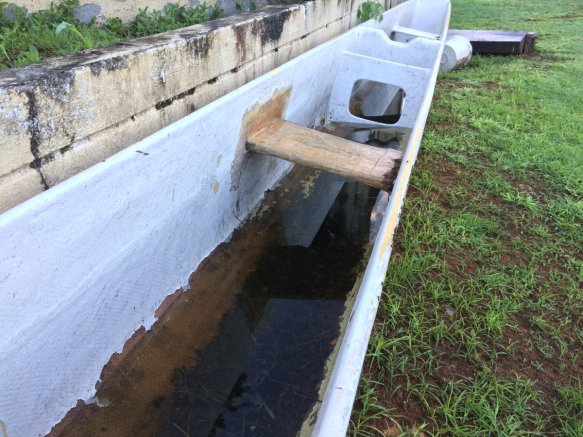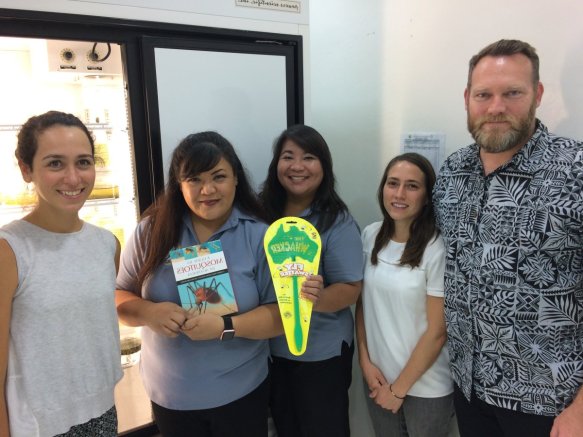
There is no single answer to one of the most commonly asked questions I’m asked. “How far does a mosquito fly?” Notwithstanding those blown long distances by cyclonic winds or transported in vehicles, the distances travelled by mosquitoes varies greatly from mosquito to mosquito. But how do scientists work it out?
My latest published research demonstrates that Australia’s saltmarsh mosquito (Aedes vigilax) flies many kilometres from urban estuarine wetlands. This has great implications for improving our understanding of their role in outbreaks of mosquito-borne disease as well as designing mosquito control programs.
There are a few different ways you can work out how far mosquitoes fly.
Firstly, given we know that mosquitoes are closely associated with certain habitats, it is sometimes possible to track back collections of mosquitoes to their preferred habitats. For example, knowing a coastal wetlands mosquito is found many kilometres away from the nearest estuarine wetland may indicate it disperses widely.
Secondly, scientists can conducted mark-release-recapture experiments. In these studies, mosquitoes are marked with some kind of substance, released, and then specimens collected in traps operated in a surrounding network can be checked to see how many of those marked mosquitoes have been recaptured and how far they’ve travelled.
In this recently published study, I marked over 200,000 Aedes vigilax with a fluorescent powder (usually used to create paint) and released them close to their larval habitats in estuarine wetlands along the Parramatta River. For the next week, I set dozens of traps around the local area hoping to recollect some of those marked mosquitoes. By scanning the mosquitoes under a UV light, the marked mosquitoes were (relatively) easily identified.
Recapture rates for these types of experiments are notoriously low. While I was only able to recapture less than 1% of those marked mosquitoes released, marked mosquitoes were recaptured many kilometres from their release point. The results demonstrated that these mosquitoes of pest and public health concern disperse so widely from saltmarsh and mangrove habitats that their impacts can be felt quite widely, highlighting the need for targeted mosquito control to minimise potentially widespread pest and public health impacts.
There is an important implication here for current “mosquito aware” urban planning strategies. The incorporation of “buffer zones” between residential developments and mosquito habitats is often proposed but this research clearly demonstrated that this strategy just isn’t practical when it comes to saltmarsh mosquitoes. They just fly too far!
While this study demonstrated marked mosquitoes were travelling up to 3km, other work I’ve done has highlighted how differently the dispersal ranges of mosquitoes can be. In a study of yellow fever mosquitoes (Aedes aegypti) in far north QLD, we found marked mosquitoes were only traveling between 100-200m. Similarly, other work with Australian backyard mosquitoes (e.g. Aedes notoscriptus) has shown they don’t fly more than 200m. That’s still enough to fly over from your neighbour’s backyard full of mosquito breeding opportunities.
There is a practical application to this work for the management of dengue in far north QLD. Knowing that the mosquitoes involved in transmission are flying less than 200m, mosquito surveillance and control can be concentrated around the homes of those infected individuals. A great example of how understanding mosquito biology can better inform cost-effective response strategies.
There is still plenty to learn about the dispersal of mosquitoes in Australia. I’ve got some ideas so if you’re looking for a research projects, get in touch!
Check out the Journal of Medical Entomology for the full paper titled “Dispersal of the Mosquito Aedes vigilax (Diptera: Culicidae) From Urban Estuarine Wetlands in Sydney, Australia“.
The abstract is below:
Aedes vigilax (Skuse) is a pest and vector species associated with coastal wetlands and the abundance of this mosquito has been identified as contributing to increased risk of mosquito-borne disease outbreaks. As urban development continues to encroach on these coastal wetlands, pest and public health impacts are becoming of increasing concern and in the absence of broadscale mosquito control. Urban planners are looking to buffer zones and other land use planning options to minimize contact between mosquitoes and humans but gaps in the understanding of dispersal ranges of mosquitoes hamper the adoption of these strategies. A mark-release-recapture experiment was conducted to measure the dispersal of this mosquito from an urban estuarine wetland in Sydney, Australia. An estimated total of over 150,000 wild caught female mosquitoes were marked with fluorescent dust and then released. A network of 38 traps was then operated for 5 d within an area of 28 km2. A total of 280 marked mosquitoes was recaptured, representing less than 1% of the estimate 250,000 marked mosquitoes released. Marked mosquitoes were recaptured up to 3 km from the release point, providing an insight into the dispersal range of these mosquitoes. The mean distance traveled by marked mosquitoes was 0.83 km, a result reflecting the greater proportion of marked mosquitoes recaptured near release point. The findings of this study indicate that effective buffer zones between estuarine wetlands and high-density urban developments would be an impractical approach to minimizing pest and public health impacts associated with this mosquito.
Join the conversation on Twitter or check out some of the other articles I’ve written on mosquitoes and other biting insects at The Conversation. You can also learn more about Australia’s wonderful mosquitoes in the award winning field guide available from CSIRO Publishing.




















